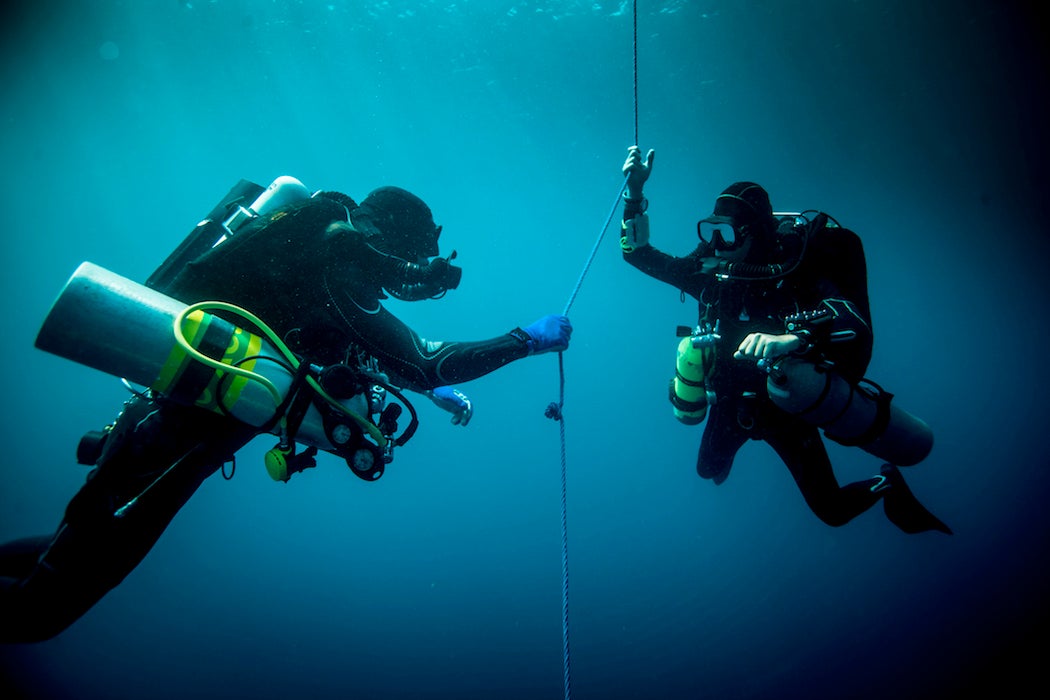Studying—or even visiting—the deep sea is tough. It’s easy enough to get down, but surfacing carelessly can lead to a host of problems resulting from decompression sickness, or “the bends.”
This is true for human divers and marine organisms alike. In humans, decompression sickness has been known since the middle of the nineteenth century. As described by researchers Richard H. Strauss and David E. Yount in American Scientist, workers toiling in mines and caissons (underwater spaces built for sinking bridge foundations) experienced severe aches in their joints upon surfacing. Colleagues unkindly teased those who were doubled over in pain, comparing their posture to a stooped walk fashionable among women of the era: The Grecian Bend. The nickname stuck—the condition is still informally called “the bends.”
Here’s how it happens: the air inhaled at depth is inhaled at the higher ambient pressure under water. Pressurized gasses dissolve in the blood. Upon ascent, the gasses in the blood (mostly nitrogen, since air is mostly nitrogen) rapidly expand, forming bubbles. Those bubbles lodge themselves in joints, the nervous system, and other unpleasant places. The condition can be fatal. Divers who remain at depth form must ascend slowly, in stages, to allow the pressure to equalize and re-dissolve the gas. The process can take days for commercial divers. Free divers who hold their breath inhale their air at surface pressure and do not have to worry. Their lungs temporarily collapse during a deep dive but no bubbles form.

Decompression sickness takes different forms in other organisms. The pressure changes often kill and disfigure deep sea organisms, rendering their study difficult and inhumane. A great example is the blobfish: in its native habitat, it looks like a fish. On the surface it looks like a melted version of the cartoon character Ziggy. To get around this problem, scientists have developed a portable decompression chamber that allows deep sea organisms to be safely transported to the surface alive.
Want more stories like this one?
Fish do not develop blood bubbles, but many deep-dwelling fish, like rockfish, do suffer when brought to the surface. For fish that have a swim bladder for maintaining buoyancy, the pressure of air inside the swim bladder decreases when the fish is raised. The bladder swells up and protrudes from the mouth. Fish outside legal restrictions must be released, but with an inflated bladder they are stuck on the surface and cannot descend. The solution is to recompress the fish by sinking it back to its original depth before letting it go, allowing the bladder pressure to re-equalize.
At great depths, many organisms rely on a gelatinous structure to maintain their shape in the immense pressure. Internal fluid counters the water pressure since effectively when most bones and tissues would be mashed. Without the pressure supporting their bodies many of these organisms droop—hence melted Ziggy. With the new portable decompression chamber device, researchers can safely raise the secrets of the deep for study.







